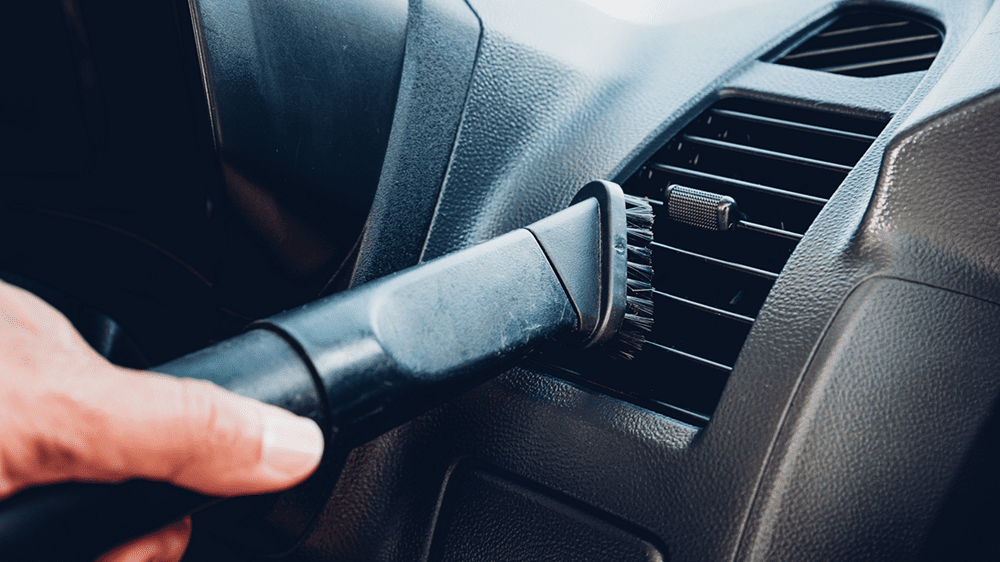Top 10 Reasons Why AC Is Not Cooling in Car Properly


If you’ve ever been stuck in traffic with warm air blowing from your vents, you know the frustration. The reasons why AC is not cooling in car vary, but ignoring them can lead to bigger repair costs.
From clogged filters to broken compressors, some issues start small and spiral fast. This guide from HEART Auto Care helps break down the most common causes. We’ll explain the warning signs and what you can do about each one.
Even if your system worked perfectly last season, it could be acting up now. Chicago summers don’t wait, and neither should you. Understanding the reasons why AC is not cooling in car will help you take action before the next heatwave.
What Is the Most Common Reason for Car AC Not Cooling?
The most common reason why AC is not cooling in car is low refrigerant levels. Refrigerant is what your system uses to remove heat from the air.
When levels drop due to leaks or wear, your AC simply can’t cool properly. Even a small leak can reduce cooling by half, making your ride uncomfortable.
Here are other common causes worth knowing:
- Low refrigerant due to leaks. Even pinhole leaks can let out enough refrigerant to make your system ineffective.
- Clogged cabin air filter. Dust, debris, and pollen block airflow, reducing the cooling efficiency inside the car.
- Faulty AC compressor. The compressor circulates refrigerant; if it’s broken, cooling doesn’t happen.
- Broken cooling fans. Fans help remove heat from the refrigerant , if they’re faulty, the system overheats.
- Malfunctioning condenser. The condenser can become clogged or damaged, especially after winter road salt exposure.
- Electrical issues. Faulty fuses, wiring, or relays can stop AC components from working altogether.
- Broken blend door actuator. If the blend door is stuck, it may mix warm air with cold before blowing it out.
- Dirty evaporator coils. These can freeze or clog, reducing airflow and cooling output.
- Overfilled AC system. Too much refrigerant can cause high pressure and reduced cooling efficiency.
- Bad thermostat sensor. If the sensor reads temperatures incorrectly, the AC system may not cool at all.
These auto AC problems range from DIY-friendly to requiring certified diagnostics. If you’re unsure, it’s best to have your system checked by a professional technician.
Can a Low Refrigerant Level Cause Car AC Not to Cool?
Yes, a low refrigerant level is one of the leading reasons why AC is not cooling in car during warm months. Your AC system relies on pressurized refrigerant to absorb and release heat.
If the level drops too low, your compressor won’t activate or the air will come out lukewarm. Some newer vehicles even shut off AC entirely to protect the system from damage.
To help you know if refrigerant is the issue, look for these signs:
- Warm air even on max AC. You set the AC to cold, but air still feels neutral or slightly warm.
- Visible refrigerant leaks. Look for oily residue around fittings or under the hood near AC components.
- Frequent cycling on and off. The system may turn on briefly, then off again, indicating pressure issues.
- Hissing sound from dashboard. If you hear this after turning off the engine, it could signal escaping refrigerant.
- Poor AC performance in idle traffic. Refrigerant struggles more under low-engine speeds when there’s not enough of it.
Your vehicle might even trigger a system warning if pressures drop too far. Addressing auto AC problems early prevents the need for major repairs later, like compressor replacement.
Parts That Commonly Fail and Cause AC Cooling Problems
Many of the reasons why AC is not cooling in car can be traced back to component failure. These parts wear out from heat, vibration, or corrosion, especially during Chicago’s seasonal shifts.
Here are the most common failed parts to look into:
- Compressor – It’s the heart of the AC system. If it’s seized or not engaging, the AC won’t cool.
- Condenser – Positioned in front of the radiator, it often gets clogged or punctured by debris.
- Expansion valve or orifice tube – These regulate refrigerant flow; when stuck, pressure builds incorrectly.
- AC clutch relay – A faulty relay may prevent the compressor from receiving power.
- Cooling fans or fan motors – Without proper airflow, the condenser overheats and loses effectiveness.
- Pressure switches – These sensors prevent damage from abnormal refrigerant pressure but may fail over time.
- Evaporator core – Often hidden behind the dash, it can develop leaks or blockages unseen to the naked eye.
- Blend door actuator – This directs airflow; if broken, you might only get hot air.
- Cabin air filter – An often-overlooked cause that blocks airflow even if the system is cooling correctly.
- Thermal fuse or resistor pack – These protect AC components from electrical overloads and can burn out unexpectedly.
Replacing these components often resolves persistent auto AC problems and restores proper cooling. Coming up, we’ll talk about DIY fixes you can try before heading to the shop.
DIY Troubleshooting Tips for Car AC That’s Not Cooling
Before bringing your vehicle in, some reasons why AC is not cooling in car can be diagnosed right at home. A few basic tools and observations might reveal simple fixes that don’t require a mechanic.
Here’s what you can check on your own:
- Inspect cabin air filter – Slide it out and hold it to the light, if you can’t see through it, it’s too clogged to work properly.
- Look for refrigerant leaks – Use a UV dye kit or inspect hoses for oil spots, those are signs refrigerant is escaping.
- Listen for unusual AC noises – Clicking, rattling, or grinding can point to a failing compressor or blend door motor.
- Watch the cooling fan – With the engine running and AC on high, fans near the radiator should spin. If not, that’s a problem.
- Check the AC compressor clutch – With the hood up, see if the clutch engages when AC is turned on. If it doesn’t spin, something’s off.
- Feel air at different settings – Switch between hot and cold, and different fan speeds to isolate if the issue is airflow, temperature, or power.
- Inspect dashboard fuses – Look for any blown fuses related to HVAC. Replacing a small fuse might save you hundreds.
- Smell for mildew – If you notice a musty smell, moisture is sitting in your evaporator, this reduces performance.
- Reset the AC system – Some newer vehicles allow you to reset the HVAC system through onboard menus or battery disconnect.
- Check for AC warning lights – Some cars have a dedicated alert or HVAC code stored in the ECU. A scan tool can pull this info quickly.
Trying these steps could resolve your issue or give you clarity before heading in. If you’ve checked these and your AC still isn’t performing, the next section will explain why professional service is often needed.
When to Seek Professional Help for Auto AC Problems
There are times reasons why AC is not cooling in car go beyond DIY or YouTube fixes. AC systems are pressurized, electronic, and sensitive to exact specs. One misstep can lead to further damage or voided warranties.
Here’s when you should bring your car to HEART Auto Care:
- Visible compressor failure: If you see the clutch not engaging or hear loud clunking, the compressor likely needs replacing.
- Recurring refrigerant loss: Recharging refrigerant only to lose it again means there’s a leak needing pro detection tools.
- Electrical shorts or fuse blowouts: Repeated electrical issues often trace back to deeper wiring faults.
- Inconsistent cooling: If your AC cools one day and not the next, sensors or actuators might be misfiring.
- Pressure imbalance alerts: Your system may store codes that only a shop-grade scanner can read and interpret accurately.
- Failed DIY recharge: Adding too much refrigerant can damage components. If your system worsens after a recharge, it’s time for help.
- Burnt smell or smoke: Burning odors or smoke from vents signal electrical problems or internal damage, don’t ignore this.
- Unusual HVAC system resets: If your settings keep changing or the system resets when the car turns off, there’s likely an internal module problem.
- No airflow at all: If your fan works but nothing comes out, it could be a blocked evaporator or ducting issue.
- Water pooling inside the cabin: This suggests your AC drain tube is clogged, technicians can clear it safely and check for mold.
Letting certified techs handle these auto AC problems ensures safety, efficiency, and correct refrigerant handling per EPA guidelines. If you’re in or near Chicago, our team at HEART Auto Care is ready to help with fast diagnostics and trusted solutions.
Fix the Reasons Why AC Is Not Cooling in Car Today
Ignoring the reasons why AC is not cooling in car can turn a minor annoyance into an expensive repair. Summer heat makes driving unbearable, especially with no cool air blowing from the vents.
From worn-out compressors to leaking refrigerant, every issue has a fix when caught early. Your comfort and safety are always a top priority, don’t wait until your system breaks down fully.


If you’re in the Chicago area and need help with reasons why AC is not cooling in car, reach out to HEART Auto Care for professional, same-day service. You can also contact us here to schedule an AC system inspection or any auto repair you need this summer.








